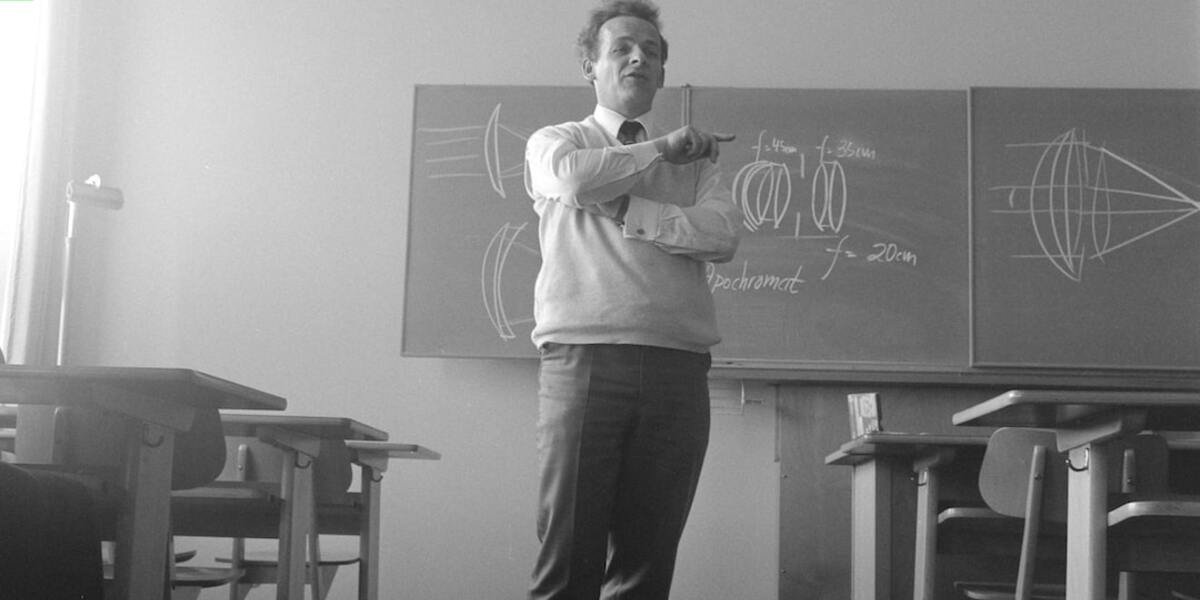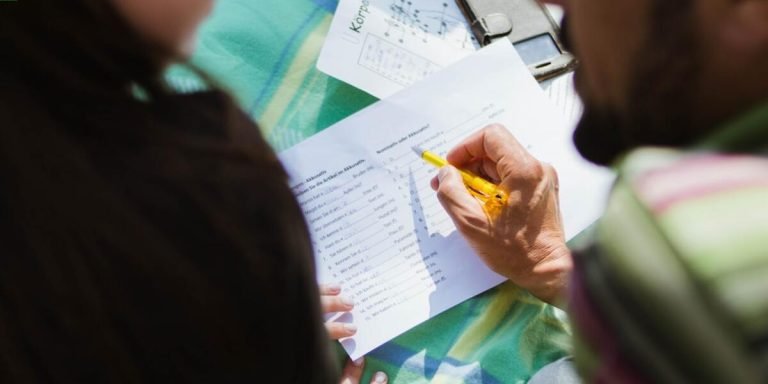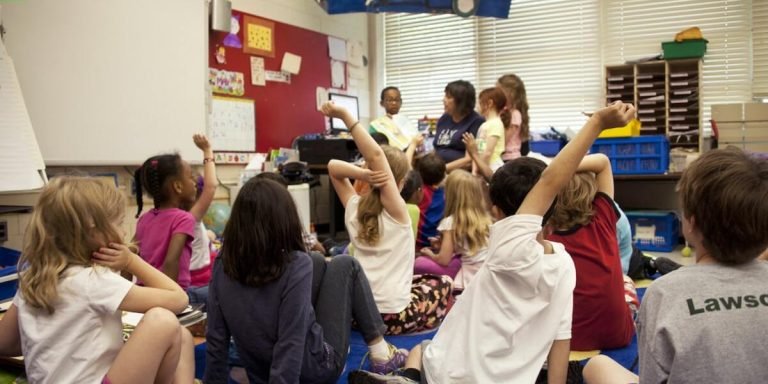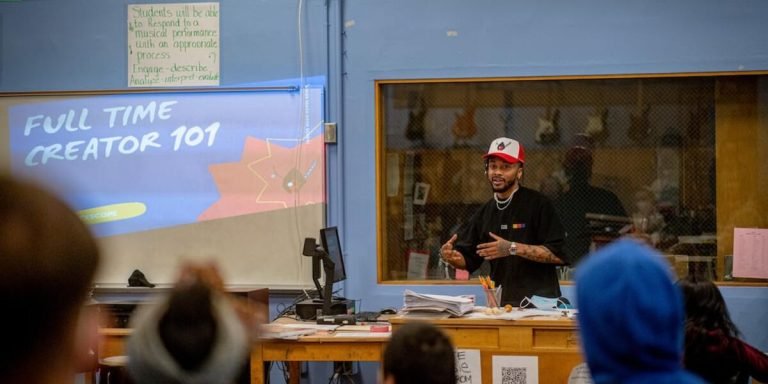PTA Meeting: Engaging Ways to Improve Participation and Communication
PTA meetings are a cornerstone of parent and educator collaboration, but ensuring strong participation and effective communication can often be challenging. The time-honored tradition helps in bridging the gap between home and school, encouraging parents to play an active role in their children’s education. But without strategic planning, these gatherings may end up being less productive than desired.
The question that arises then is how we could revamp PTA meeting formats for better results? This blog post seeks to explore alternatives beyond traditional methods while focusing on tips that make such meetings more engaging for everyone involved; thus facilitating constructive dialogue around our children’s academic journey, fostering stronger parental involvement and enhancing teacher-parent understanding.
Did you know?
According to a National Education Association study, when parents actively participate in PTA meetings, students are almost twice as likely to achieve high academic performance.
Maximizing the Impact of PTA Meetings
As a fulcrum of parent-educator cooperation, it’s essential to maximize the impact of Parent Teacher Association (PTA) meetings. These gatherings provide an invaluable platform for communication and collaboration between parents and educators in shaping children’s education journey. However, leveraging these settings productively requires strategic implementation.
In 2023, successful PTA meetings are those that go beyond mere information sharing sessions to interactive platforms fostering mutual understanding and problem-solving efforts among parents and teachers. Clear articulation of goals at the start sets precedence over aimless discussions; this helps stay on track during dialogues about student learning outcomes or addressing specific concerns surrounding school policies or curriculum standards.
The most impactful PTA meetings capitalize on inherent human relationships by focusing not just on problems but also celebrating accomplishments together. By acknowledging academic successes as well as positive changes at individual levels can instill a deeper sense of belongingness towards school-community initiatives thus enriching parental involvement.
Lastly, ensuring diverse viewpoints get heard is equally crucial which may require innovative brainstorming sessions like breakout groups where more intimate conversations can unfold leading to better solutions or constructive feedback mechanisms such as digital polls conducted within the meeting itself providing instant insights without eating much into precious time dedicated solely for productive discussions.
Therefore getting your preparations right while honing mutually beneficial dynamics could revolutionize traditional views encapsulating this quintessential aspect of childhood education system – The Powerfully Transformative Alliance: Your child’s PTA Meetings!
Developing a Results-Oriented Agenda for Effective Parent-Teacher Collaboration
Developing a results-oriented agenda is vital for effective parent-teacher collaboration during PTA meetings. In 2023, PTAs continue to play an integral role in enhancing children’s educational experiences; thus, the need for strategic planning and execution.
Firstly, clear objectives form the backbone of any successful PTA meeting. Parents and educators should identify their goals beforehand – these could range from improving school facilities or fundraising efforts to addressing individual student concerns. Goal setting allows every participant to have clarity about the purpose of the meeting hence promoting targeted discussions.
Secondly, a well-defined structure can keep your pta meeting on track while ensuring that all agenda items are adequately addressed within stipulated timelines so no crucial issues left hanging due to time constraints. A structured approach entails having predetermined start/end times coupled with allocated durations per topic discussion – this promotes efficiency effectively.
Communication forms another critical aspect aimed at optimizing PTA meetings outcomes through effective collaboration between parents & teachers alike.
Open lines communication foster respect mutual understanding among parties involved thereby enabling them work cohesively towards achieving common objectives.
Finally yet importantly , regularly scheduled reviews allow both sides assess progress made revisit areas requiring further attention . For instance if there were challenges implementing agreed upon solutions after previous pta outing then such matters could be brought up again gauge effectiveness past resolutions initiate necessary adjustments where needed .
Incorporating Student Performance Data into Discussions
PTA meetings are a vital tool for bridging the gap between parents and educators. They provide an opportunity to discuss student performance data in-depth, which can positively influence education strategies.
When incorporating student performance data into discussions at PTA meetings, it’s essential to clarify what this information really means and how it impacts children’s learning process. For most parents, terms such as percentile ranks or standard scores might be confusing. As such, spend time explaining these key metrics during the meeting.
Next is using real-life examples where possible – concrete situations make concepts clearer and relatable for others who may not understand educational jargon well. Maybe share instances of specific students that illustrate factors affecting their academic progression without revealing personal identities due to privacy concerns.
Further on, encourage a two-way communication with attendees by creating space for questions about the presented data. This approach fosters understanding because everybody gets an opportunity to voice any uncertainties they may have concerning their child’s progress report details thus far.
Lastly 2023 has taught us one significant lesson: Harnessing technology effectively benefits our kids’ schooling experience tremendously; therefore presenting ways you plan integrating digital aspects within teaching methods while interpreting analysed results should form part of your talks too!
Fostering Inclusive Communication at PTA Gatherings
PTA meetings are an indispensable platform where parents and teachers come together to discuss the overall growth of children. However, in 2023, merely conducting these gatherings isn’t enough; it’s time we strive for inclusive communication at PTA meetings. By fostering a setting that encourages everyone’s participation without bias or prejudice, schools can create an ecosystem conducive to every child’s cognitive development.
Inclusive communication is about encouraging all attendees – parent or educator- to voice their thoughts freely on matters related to education and child welfare. Each suggestion made at a PTA meeting should be valued because inclusivity brings forth diverse perspectives which promise comprehensive solutions towards improving childhood education standards.
Creating such open channels of dialogue not only demonstrates respect for individual viewpoints but also builds trust among stakeholders – two key elements vital for effective collaboration between educators and families. Fostering inclusive communication leads this dynamic consortium into making collective decisions that serve suitable learning pathways adapted by the school while appreciating each youngster’s unique capacities.
Strategies for Engaging Non-English Speaking Parents in School Affairs
Creating an inclusive environment at your PTA meetings is vital to ensuring everyone feels welcome and involved. Especially, non-English speaking parents who are often unintentionally left out due to language barriers in school affairs.
1. **Translation Services:** Providing professional translation services can be a game-changer for non-English speaking parents attending the PTA meeting. This allows them equal opportunities to understand discussions and participate effectively.
2. **Bilingual Literature:** Distribute all literature relevant to the “pta meeting” including agendas, minutes of past meetings, future plans, etc., in both English and their native languages so they feel included.
3.Strategies like utilizing bilingual community volunteers or providing dual-language materials make it easier for these individuals not only to attend but also meaningfully contribute during these gatherings.
4.In addition offering workshops on key topics being covered at schools – like digital safety rules or understanding new educational standards – translated into various languages would help bridge this gap significantly.
Utilizing Technology to Broaden Participation Among Working Families
In the current digital age, utilizing technology is an innovative approach to broaden participation among working families in PTA meetings. With work and personal commitments often clashing with physical meeting schedules, it has become crucial for parents to find flexible ways of engaging in their children’s education.
Online platforms have undoubtedly revolutionized our communication style – making interactions more accessible than ever before. Leveraging these tools can provide significant benefits by empowering all family members to participate at PTA gatherings virtually from anywhere and anytime.
Additionally, implementing a dynamic platform where people could post thoughts, ideas, queries related specifically to agenda items prior-to-the-meeting would be highly beneficial. It enables each parent-educator team member that participates virtually not only stay updated about past discussions but also drive future ones – thus leading into purposeful decision-making processes right through their fingertips!
Remember though! Inclusion isn’t just about having access; it’s also ensuring everyone feels comfortable using these technologies you’re proposing. So make sure any software adopted comes with user-friendly features & easy navigations along-with dedicated training sessions periodically.
Enhancing Volunteerism and Resource Allocation Through PTA
In the landscape of education, parental involvement has always played a pivotal role. This holds particularly true in today’s changing educational environment perceived amidst an ongoing digital transformation and post-pandemic world of 2023. The Parent-Teacher Association (PTA) meetings don’t merely serve as jumping-off points for discussions about academic progress but have evolved into strong platforms to foster volunteerism powerhouses and optimize resource allocation.
Volunteerism, due to its collaborative nature, unites parents with various skill sets under one umbrella – “Enhancing their child’s scholastic experience”. PTA encourages this willingness by identifying struggling areas needing supplementary support. They are akin to planting seeds that even on small scale can blaze trails in terms of active contribution such as assisting teachers with extracurricular activities or organizing fundraisers aimed at enriching student life.
Resource management gains never before seen momentum when driven through well-directed parent participation via PTA meetings. It’s not just about financial contributions; rather it encompasses investing valuable time resources like arranging field-trips or offering remedial tuition sessions focusing on problem-solving skills tailored for each student needs/questions raised during these interactions.
All said perceptions radically change when we broaden our perspective from individual gain towards communal benefits – transforming isolated efforts into dynamic systems working synergistically towards common objectives: quality childhood education supported both inside-outside classroom environments within every school district around the globencircling back to 2023 where building community remains quintessential than ever before!
Creative Approaches to Boosting Parental Involvement in School Activities
Parental involvement is an essential aspect of a child’s academic success. Boosting this can be achieved through various creative approaches, particularly during PTA meetings. In 2023, these strategies have become more important than ever.
One method to boost parental engagement in school activities is by providing flexible volunteering options. Not all parents are available for daytime events due to work or other commitments. Arranging tasks that can be accomplished remotely or at different times could encourage more participation from busy parents.
Another approach would involve the use of digital technologies for effective communication and collaboration between educators and parents via online platforms used specifically during PTA meetings. These tools allow updates on class projects, upcoming events as well as facilitate resource allocation among volunteers efficiently..
Scheduling social gatherings occasionally help foster better relationships within the parent community too which plays a key role in successful volunteerism efforts.. Picnics, potlucks or even virtual meet-ups make it fun and easy for everyone involved – thus enhancing their willingness to participate further.
Highlighting contributions made by previous volunteers provides recognition but also sets good examples inspiring others who might feel hesitant initially about participating actively in PTA meeting sessions..
Lastly, offering any form of training programs supporting potential roles they may play not only gives confidence but also helps improve effectiveness once they start contributing..
Prioritizing Funding Needs to Support Academic Excellence
Fundraising is an integral part of every PTA meeting, aimed at gathering resources to improve the quality of childhood education in our schools. But with a plethora of needs and wants competing for attention, it’s crucial that we prioritize those which contribute significantly to academic excellence.
Firstly, let’s consider investing more in educational materials such as textbooks and e-books; these are fundamental tools necessary for effective teaching and learning. Upgrading classroom libraries frequently can inspire children’s interest towards reading while keeping them abreast with current happenings around their world.
Conclusion
In the grand play of childhood education, a successful PTA meeting can be likened to an excellent backstage crew that creates a seamless performance. Amplifying communication, fostering participation and nurturing collaboration are pivotal to this role. Remember: transforming your PTA meetings is not about executing one remarkable event; it’s about engineering lasting change while building bridges between educators and parents for the betterment of our youngsters’ educational journey.
Don’t let your curiosity stop at this blog post! Our website has more expert advice on navigating the process of childhood education you don’t want to miss out on – from ingenious teaching strategies to comprehensive parent support guides. We invite you all – passionate parents, devoted educators or simply lifelong learners- who strive toward creating meaningful learning environments for children, stay connected with us by exploring further here.







